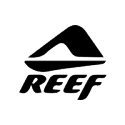
A wetsuit is a key piece of equipment for all water sports enthusiasts. Whether you're into surfing, windsurfing, kitesurfing, wakeboarding, or stand-up paddleboarding (SUP), choosing the right wetsuit ensures warmth, comfort, and protection from cold water and wind. Read on to learn how to select the best wetsuit for your needs.
1. Wetsuit Thickness – How warm should it be?
The thickness of a wetsuit determines its thermal insulation. The thicker the neoprene, the better the protection against the cold. The right choice depends on the water temperature:
- 2/2 mm – for warm waters (above 20°C)
- 3/2 mm – for moderately warm waters (15–20°C)
- 4/3 mm or 5/4/3 mm – for colder waters (8–15°C)
- 6/5/4 mm or thicker – for very cold waters (below 8°C)
2. Types of Wetsuits
There are different types of wetsuits designed for various weather conditions and activity levels:
- Shorty (short sleeves and legs) – ideal for summer and warm waters.
- Longarm shorty (long sleeves and short legs) – great for summer and warm waters, offering extra sun protection for the arms.
- Fullsuit (long sleeves and long legs) – provides full-body protection in colder conditions.
- Neoprene top or pants – suitable for mild conditions or as an extra layer under a wetsuit.
- Drysuit – designed for extremely cold conditions, as it keeps water out completely.
3. Wetsuit Closure – Zip-Free, Front-Zip or Back-Zip?
- Back-zip (zipper on the back) – the easiest to put on but may allow more water in and is less flexible due to the zipper on the back.
- Front-zip (zipper on the front) – offers better waterproofing and greater flexibility.
- Zip-free (no zipper) – the most elastic and water-resistant option but harder to put on.
4. Flexibility and Material
High-quality wetsuits, such as those from Mystic, are made from flexible materials that provide a better fit and greater freedom of movement. Key features to look for:
- Thermal lining – enhances insulation and increases warmth and comfort.
- Glued and blind-stitched seams – prevent water from seeping through and reinforce durability.
- Reinforcements on the knees and elbows – extend the wetsuit’s lifespan and improve protection.
There are different types of neoprene that affect elasticity, durability, and thermal insulation. Traditional neoprene is often petroleum-based, while high-quality neoprene, such as Yamamoto neoprene, stands out for its exceptional stretch, lower water absorption, and eco-friendly production. If you want to learn more about Yamamoto neoprene and how it compares to other types, read our blog on the different kinds of neoprene.
.png)
5. Size and Fit
A wetsuit should fit snugly but not be too tight. If it's too loose, water will seep in and reduce insulation; if it's too tight, it will restrict movement. Always check the manufacturer’s size chart and, if possible, try the wetsuit on before purchasing.
Conclusion
Choosing the right wetsuit is essential for enjoying water sports without feeling cold. If you're looking for a high-quality and reliable wetsuit, Mystic wetsuits are an excellent choice, combining premium materials, a great fit, and maximum protection. Check out our selection and find the perfect wetsuit for your water adventures!
If you have any questions or need more information, feel free to contact us via email, give us a call, or visit our store. We’ll be happy to help you choose the right wetsuit!
See you on the water!
Infinity Sport TEAM










































